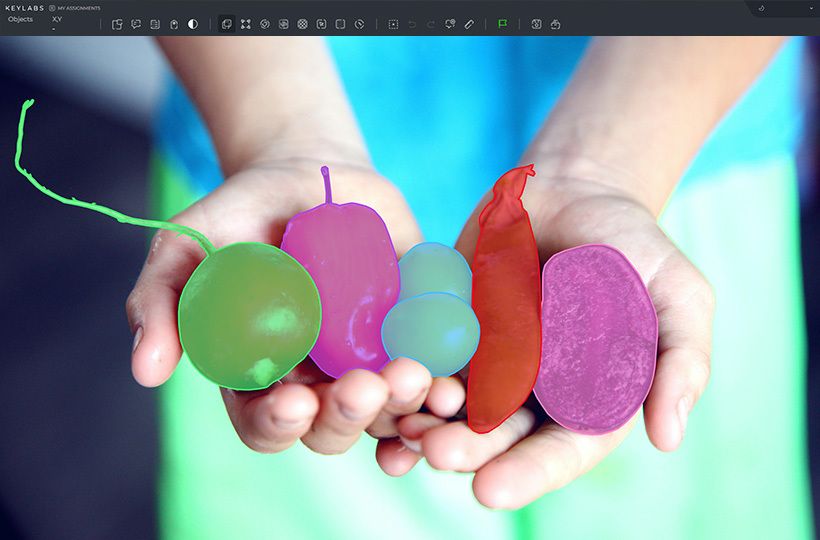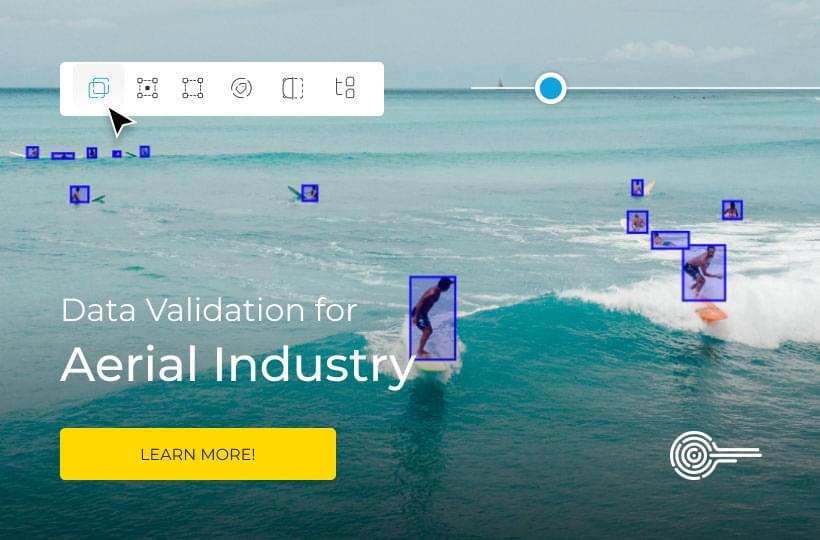Choosing the Right Image Classification Algorithm
As businesses and organizations increasingly rely on visual data for decision-making, the demand for accurate image classification algorithms is growing. Choosing the right one in this area impacts success in object detection, medical imaging, and facial recognition industries.
Image classification is the core of computer vision. It involves categorizing and labeling images based on specific rules. Deep learning with advanced AI hardware and GPUs has improved image classification performance. However, data size, accuracy requirements, and resource availability must be considered when choosing the optimal algorithm.
Quick Take
- Classification algorithms help decipher the vast amount of visual data generated every day.
- Deep learning, especially Convolutional Neural Networks (CNNs), has revolutionized image classification.
- The choice of algorithm depends on the characteristics of the data, accuracy requirements, and resource availability.
- Evaluating the algorithm's performance, using transfer learning, and implementing the right methods contribute to successful implementation.

Understanding Image Classification Algorithms
Image classification is a computer vision task where an AI model determines which class an object in an image belongs to.
The process involves several steps:
- Preprocessing. Images are cleaned to focus on important features and standardized.
- Feature extraction. Images are broken down into features for easier analysis.
- Training. AI models are trained to recognize classes on labeled images.
- Classification. Trained models sort new images into classes.
Types of Image Classification Algorithms
There are two types of image classification algorithms: unsupervised and supervised.
Unsupervised learning is a type of machine learning in which an AI model learns the data structure without pre-defined labels. The algorithm does not know what classes are in the data. It finds patterns, groups, or structures in the data using clustering and dimensionality reduction techniques.
Supervised classification uses annotated data to train the classifier. After training, it can classify new images. Standard methods include "maximum likelihood" and "minimum distance," which compare images to training data. This method uses various algorithms, such as linear regression and neural networks, to solve image problems.
Deep learning has revolutionized image recognition and classification. Convolutional Neural Networks (CNNs) are good at learning features from raw data. Popular CNNs like LeNet and ResNet have demonstrated accuracy and efficiency.
Image classification is evolving with new methods and approaches. Edge AI is a new trend focusing on processing data on devices near cameras, providing better privacy and performance.
Factors to consider when choosing an image classification algorithm
The size and complexity of the dataset are the primary considerations when choosing an image classification algorithm. Simple algorithms like logistic regression or naive Bayes are suitable for smaller datasets. However, complex algorithms like random forests or support vector machines are needed for larger datasets. They handle the increased dimensionality of the data and capture complex patterns.
Consider the complexity of the images. If the images have many features or are high dimensional, methods like principal component analysis (PCA) or linear discriminant analysis (LDA) will reduce the feature space. This approach reduces the risk of overfitting.

Accuracy and performance requirements
Different algorithms vary in accuracy and speed. Convolutional Neural Networks (CNNs) are good at classifying images, especially with complex and large datasets. However, they require more resources and training time.
If performance is important with little loss of accuracy, algorithms such as support vector machines (SVMs) or random forests are a better fit. These algorithms classify faster while maintaining high accuracy.
Computing resources and scalability
Consider available computing resources and scalability when choosing an algorithm. Algorithms such as deep learning approaches require significant computing power and memory.
Scalability is required for growing datasets or real-time image processing. Algorithms that scale with the size of the data and adapt to changing requirements are ideal. Methods such as transfer learning reduce training time and increase scalability.
Popular Image Classification Algorithms
Convolutional Neural Networks (CNNs) extract features from images using convolutional and pooling layers. CNNs have achieved human-level accuracy in image recognition tasks. Popular architectures include ResNet, Inception-v3, VGG16, and MobileNet, each tailored for specific applications.
Support Vector Machines (SVMs) aim to find the best hyperplane to separate classes in a multidimensional space. They are used in complex tasks and are resistant to overtraining.
Random Forests combine multiple decision trees for better prediction accuracy. In image classification, they handle unbalanced datasets and offer a clear understanding of the AI model. By aggregating predictions from many trees, random forests capture complex patterns and provide classification.
The choice of algorithm for image classification depends on several factors, including the complexity of the problem, computational resources, and application requirements.
Evaluating the performance of an image classification algorithm
First, different machine learning algorithms are compared on a dataset. This determines the best fit for the image classification task. Methods such as k-fold cross-validation or stratified sampling are used to do this.
Then, the hyperparameters are fine-tuned for optimal performance. Methods such as grid search or random search help explore the hyperparameter space.
Evaluating your AI model by reserving a portion of the dataset provides information about its generalization and performance. Metrics such as accuracy, precision, completeness, and F1-score reveal the strengths and weaknesses of the AI model. Accuracy is used when false positives are a bigger problem, while completeness is needed when false negatives are more harmful. The F1 score balances accuracy and completeness and provides a comprehensive assessment of the performance of the AI model.
Tools like the ROC curve and AUC give an idea of the AI model's ability to discriminate between classes. The confusion matrix helps visualize the performance and highlights areas that need improvement. With the help of metrics like top-k accuracy and log loss, you can gain a deeper understanding of the AI model's behavior.
Transfer Learning for Image Classification
The main advantage of transfer learning is using pre-trained AI models, such as VGG, ResNet, or Inception. These models are already trained to extract important features from large datasets. They provide a foundation for tuning and adapting to a specific classification task.
This reduces the time and resources required to develop image classification systems from scratch.
Using Pre-trained Models
Pre-trained AI models are already trained on large datasets, such as ImageNet, which contains millions of annotated images in various categories. These AI models recognize complex patterns and features, even with smaller datasets. This suits projects where collecting and annotating large datasets is expensive or time-consuming.
Fine-tuning for specific domains
Pre-trained AI models require fine-tuning to match the specifics of the task. Fine-tuning involves retraining the last few layers of a pre-trained AI model using data specific to a given domain. This allows the AI model to learn and specialize on unique features and patterns for a particular classification task.
Fine-tuning freezes the early layers of a pre-trained AI model. These layers capture the general features. The focus is on training later layers that are more specific to a given domain in the task. Fine-tuning an AI model helps it adapt to recognize and classify images in a particular context.
For example, if you are working on a dog breed classification task, you can use a pre-trained model such as InceptionV3. It is trained on 1.2 million images from 1000 categories. The AI model accurately recognizes different breeds by fine-tuning the last few layers of InceptionV3 with a dataset specific to dog breeds.
Using pre-trained AI models and adapting them to domains helps achieve higher performance and reduces the time and resources required to train from scratch.
Image Classification Algorithm Selection Workflow
- Define the problem and requirements. Define the goals, such as object identification or scene classification. Specify the desired accuracy, speed, and interpretability of the AI model. These requirements guide the algorithm selection process.
- Data exploration and preprocessing. Assess the dataset size, dimensionality, and class distribution. This helps to understand the complexity of the problem, which influences algorithm selection. Preprocessing steps, such as normalization and outlier removal, prepare the data for training the AI model.
- Algorithm selection. Algorithms should be selected based on the characteristics of the problem and data. Popular options include convolutional neural networks (CNNs), support vector machines (SVMs), and random forests. Each has strengths and weaknesses, depending on the needs of the project.
- Algorithm training. You must split the data into training and validation sets to train algorithms. This is done using cross-validation to evaluate performance. Explore hyperparameters and architectures to optimize AI models.
- Evaluation and iteration. Evaluate models using metrics like accuracy and precision. These assess AI models' performance and identify areas for improvement.
- Based on the evaluation, the AI model can be improved. This includes tuning hyperparameters, changing algorithms, or adding more data. Iteration improves the performance and robustness of AI models.
Image Classification Algorithm Implementation Practices
Deep Learning Models
Before deploying an AI model, test its performance on a separate validation set. This ensures that the AI model generalizes to unseen data and detects problems. After deployment, monitor the AI model's performance and retrain or retune it if data drift or performance degradation occurs.
To improve the performance of an AI image classification model, the following methods are used:
- Transfer learning. Use finely tuned pre-trained AI models in the tasks. This reduces training time and increases accuracy, especially with limited data.
- Ensemble methods combine predictions from multiple AI models for reliable and accurate results—methods such as batching, boosting, and stacking increase system performance.
- Hyperparameter tuning. Optimize hyperparameters using methods such as grid search, random search, or Bayesian optimization. The right combination affects the performance of the AI model.
Areas of application of image classification algorithms
Image classification algorithms are used in satellite image analysis and autonomous vehicles.
Object detection and recognition techniques allow machines to detect and identify objects in images accurately. Autonomous vehicles use these algorithms in the automotive industry to detect road signs, pedestrians, and other vehicles, improving road safety. Retailers like Amazon use image classification to manage inventory, optimize product categorization, and analyze customer sentiment.
Image classification algorithms help analyze medical images (X-rays, MRIs) in medical imaging analysis. They help doctors detect abnormalities and make accurate diagnoses. This technology is changing medical diagnostics and allows for detecting and treating various disease conditions.
Facial recognition and biometrics algorithms analyze facial features and match them to databases for authentication and surveillance. Law enforcement agencies use these algorithms to identify suspects, which enhances public safety. In biometrics, image classification secures access control systems and enables entry based on facial recognition.
FAQ
What is image classification?
Image classification is how an AI model determines an image's class. It analyzes visual features and assigns an appropriate label.
What are the main types of image classification methods?
There are two types of image classification methods: supervised and unsupervised. Supervised methods use labeled data for training, while unsupervised methods do not require training data.
How has deep learning affected image classification performance?
Deep learning has improved image classification performance. It works with AI hardware and GPUs, providing high accuracy.
What factors influence the choice of an image classification algorithm?
The size and complexity of the data, the accuracy requirements, and the computing resources play important roles. The scalability, interpretability of the AI model, and the characteristics of the data also play essential roles.
What are the known image classification algorithms?
Image classification algorithms include Convolutional Neural Networks (CNN), Support Vector Machine Learning (SVM), and Random Forests.
What are the practices for implementing image classification algorithms?
The practices include data augmentation and addressing class imbalance using techniques such as oversampling or undersampling.
In what areas are image classification algorithms used?
Image classification is used to identify objects in satellite imagery, recognize road signs in autonomous vehicles, categorize products in online stores, and healthcare to diagnose diseases from medical images.
